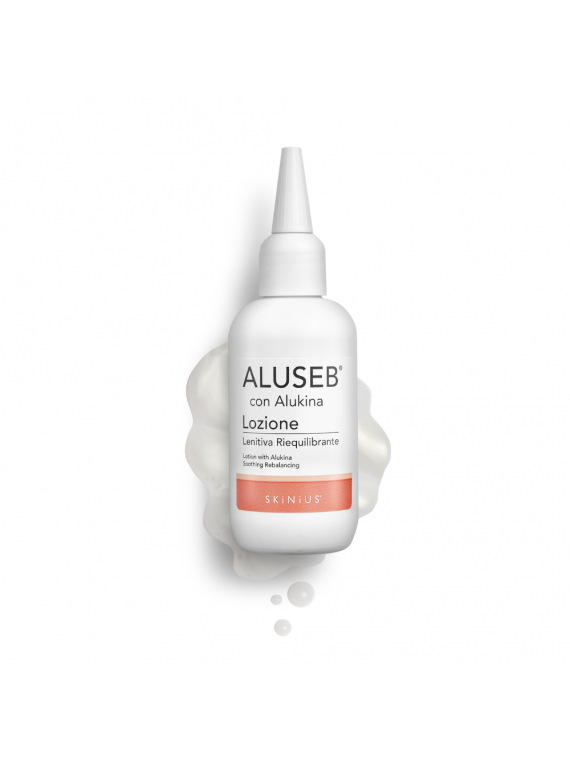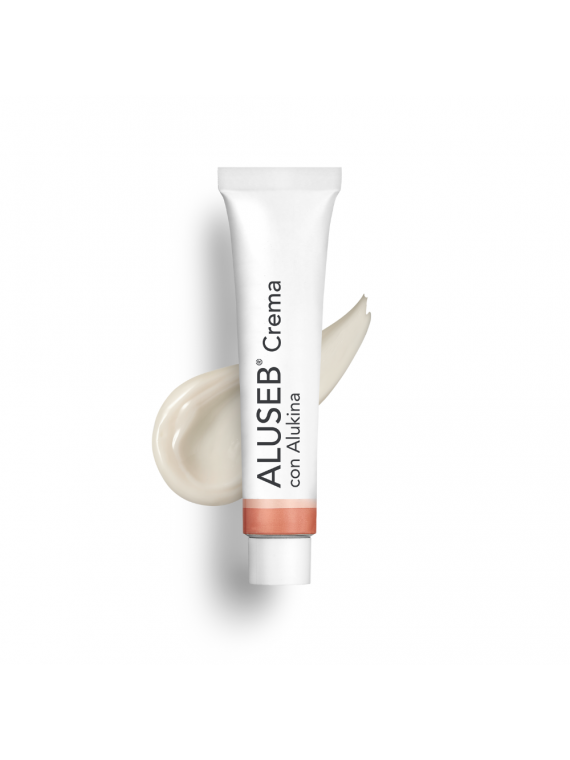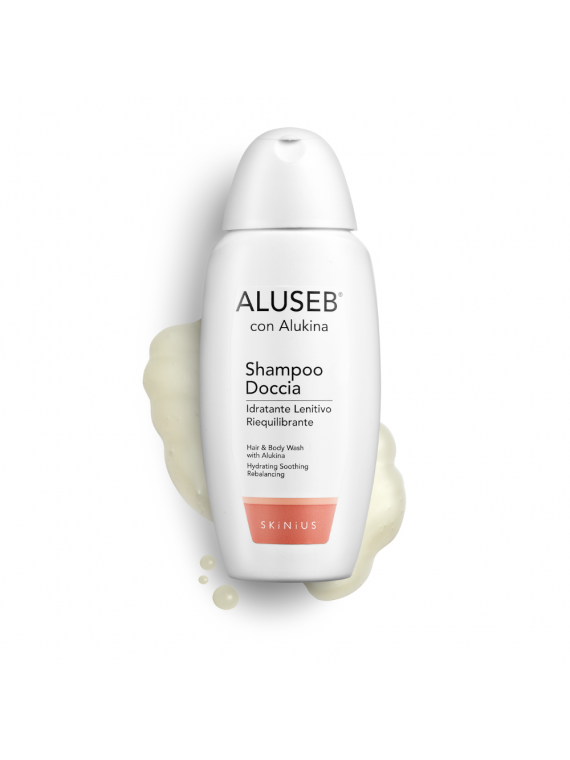Seborrhoeic dermatitis is a common inflammatory skin condition that occurs on areas of the skin that are very rich in sebaceous glands, such as the face, chest and scalp. It is most frequent in children and adult men between 30 and 40 years of age.
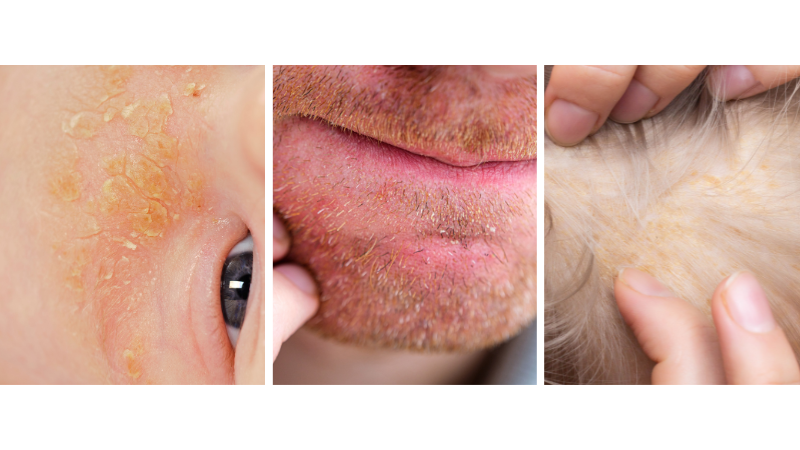
What are the symptoms of seborrhoeic dermatitis?
The most common symptoms are
- chapped or greasy patches
- redness and itching
- formation of small crusts on both skin and scalp (commonly called dandruff)
Seborrhoeic dermatitis is a chronic and relapsing disease, i.e. it tends to reappear over time. Symptoms have an intermittent pattern, e.g. they increase with cold, dry weather or stress and generally subside in summer.

What causes seborrhoeic dermatitis?
The manifestations of the disease are due to inflammation of the skin, which causes an imbalance in the production of sebum, the natural fat produced by the skin that helps to keep it soft and defend it from external agents. The causes responsible for the disease are not yet fully known. However, it has been found that certain factors may contribute to the appearance of seborrhoeic dermatitis:
- genetic predisposition, i.e. previous cases of seborrheic dermatitis in the family;
- nervous factors, such as depression and stress;
- abnormalities in the skin's natural defence system;
- unfavourable external environmental conditions, such as high humidity;
- air pollution and smog;
- hormonal imbalances;
- exposure to aggressive cleansers or irritating agents.
In addition, excessive sebum can cause the proliferation of a fungus that is normally present on the skin, but if it grows excessively, it can contribute to aggravating inflammation. This is why it is important to preserve the correct balance of the skin microbiome.
How to avoid complications?
Injuries and inflammation of the skin can facilitate certain infections. This is why it is important
- see a dermatologist to obtain a correct and timely diagnosis
- intervene appropriately with dermatological and eubiotic cosmetics
- always have proper personal hygiene
- avoid scratching and help the skin with soothing creams
Scalp seborrheic dermatitis
The scalp, an area with high sebum production, is often affected by annoying aesthetic problems such as flaking with production of dry or oily dandruff that settles in the hair, redness and itching.
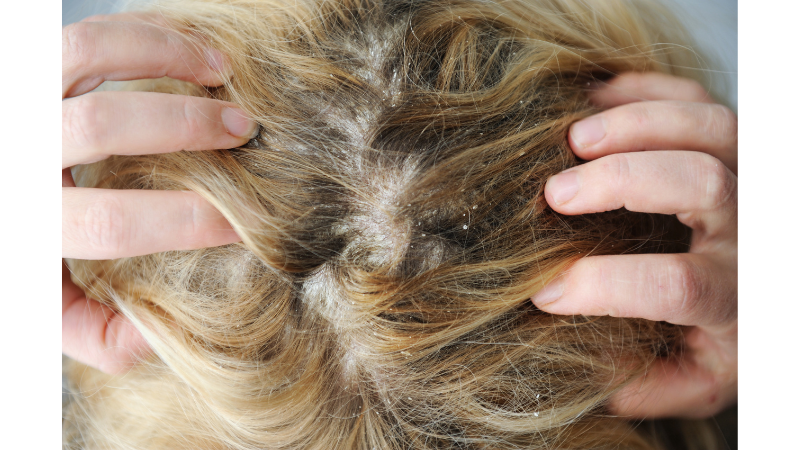
How to treat seborrheic dermatitis on the scalp?
For seborrhoeic dermatitis on the scalp, choose a shampoo with Alukina, which helps rebalance the hydrolipidic skin film with a moisturising, sebostatic and soothing action.
In the case of scales and severe itching, an ideal solution is a lotion with Alukina and Panthenol, with an emollient and soothing action, a useful cosmetic aid that favours the detachment of the scales and alleviates redness and the annoying itching sensation.
Face seborrhoeic dermatitis
The skin face affected by seborrhoeic dermatitis presents characteristic clinical manifestations: yellowish scales that may be oily or dry, often itchy, and papules (reddish skin reliefs that do not contain pus and tend to peel off) usually present at the hairline, on the nose and in the ear pinnae.
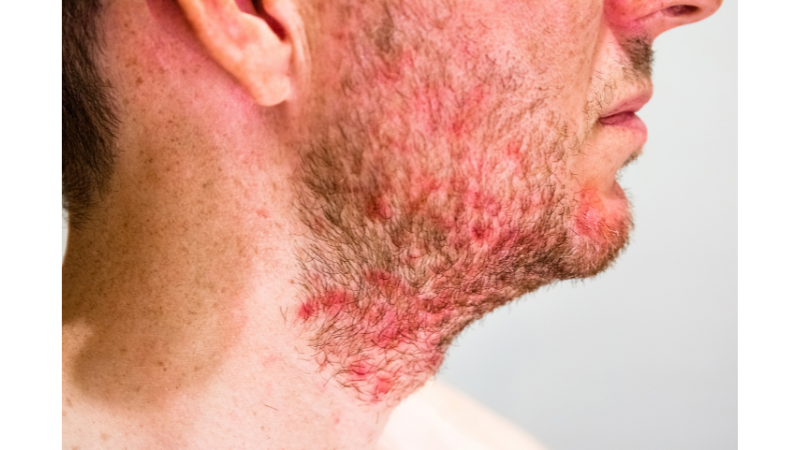
How to treat seborrhoeic dermatitis on the face?
For seborrhoeic dermatitis of the face, choose a gentle cleanser with Alukina that helps rebalance the hydrolipidic film of the skin with a moisturising, sebostatic and soothing action.
Continue treatment with an Alukina-based cream with astringent, sebostatic, soothing and emollient action.
In the event of severe discomfort or when needed, an ideal treatment is a lotion with Alukina and Panthenol, with emollient and soothing action, a useful cosmetic aid that favours the detachment of scales and alleviates redness and the annoying itching sensation.


 Italiano
Italiano
 English
English
